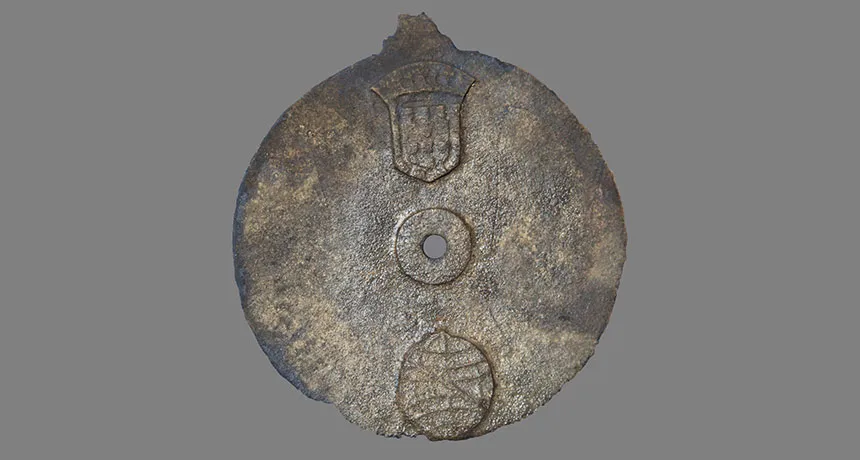The oldest known astrolabe was used on one of Vasco da Gama’s ships
The navigational device dates back to as early as 1496

MARINER’S FRIEND A metal disk found at a shipwreck site near Oman is the oldest known mariner’s astrolabe, a device for navigating at sea.
D. Mearns







